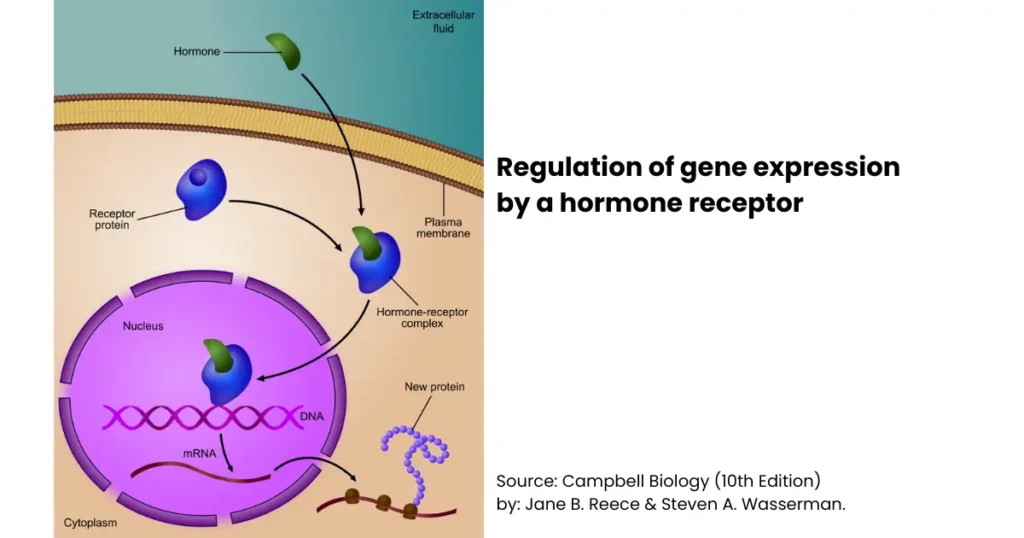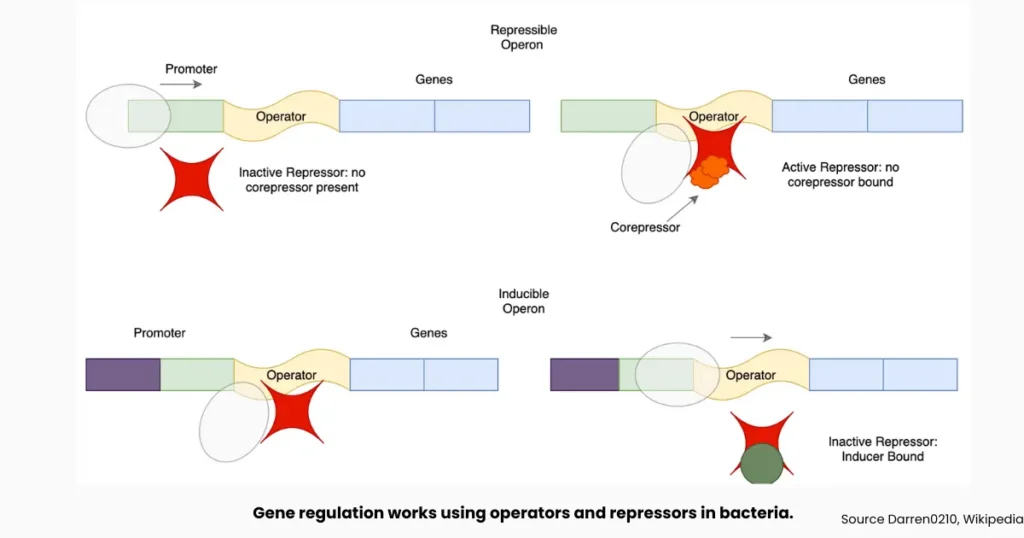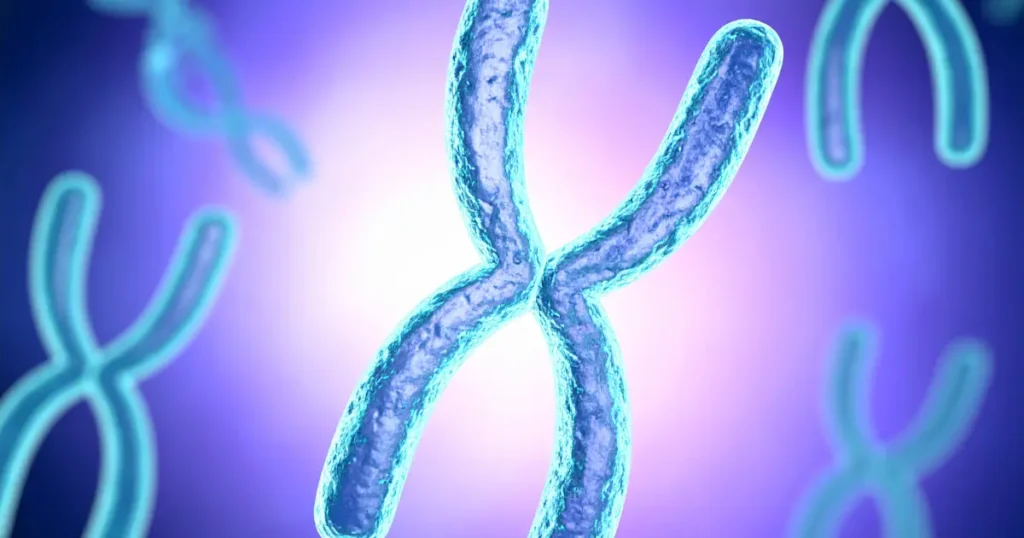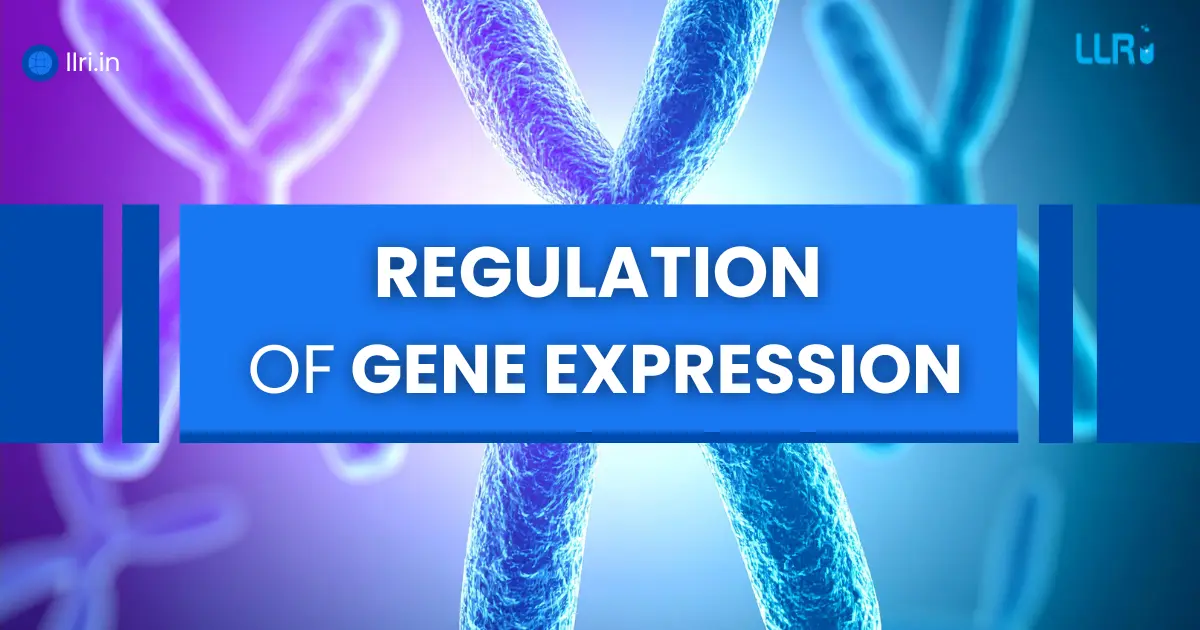Regulation of Gene Expression: Have you ever wondered why all the cells in our body contain the same DNA but still perform entirely different functions? The answer lies in the regulation of gene expression.
This regulation is like a master switchboard that controls which genes are turned “on” and which remain “silent.” By carefully orchestrating this, organisms can grow, adapt, and survive in constantly changing environments.
In fact, Francis Crick, one of the scientists behind the discovery of DNA, once noted: “The central dogma explains the flow of information, but gene regulation explains the life of that information.”
You can say, it is the system that determines whether a gene is turned “on” or “off,” deciding how proteins are produced and when they’re required. Without this regulation, life as we know it would simply not exist.
In this blog, we’re going to explore the following:
- What is regulation of gene expression and why it matters.
- How regulation of gene expression in prokaryotes differs from that in complex eukaryotes.
- The role of positive and negative regulation of gene expression in balancing cellular functions.
- How epigenetic regulation of gene expression adds another fascinating layer of control.
- The influence of diet and environment through nutritional regulation of gene expression.
By the end of this blog, you’ll not only understand the science behind gene regulation but also see how it connects to health, agriculture, and medicine – our guarantee!
History of Gene Expression Studies
Let’s start with the backstory first, a bit, yeah? The journey of understanding and learning how genes are controlled began in the mid-20th century. After the discovery of DNA’s double-helix structure in 1953 by James Watson and Francis Crick, scientists turned their attention to how the genetic code translates into cellular functions.
In the 1960s, François Jacob and Jacques Monod introduced the operon model while studying bacteria (E. coli). Their research revealed how a group of genes could be switched on or off depending on environmental needs. This was one of the first clear demonstrations that genetic activity could be regulated. Their groundbreaking work even earned them the Nobel Prize in Physiology or Medicine in 1965.
As molecular biology advanced through the 1970s and 1980s, new tools like recombinant DNA technology and cloning helped researchers examine gene regulation at a deeper level. By the 1990s, scientists were exploring not just how genes were turned on or off, but also how modifications outside the DNA sequence, later known as epigenetics, could influence gene activity.
Today, with the Human Genome Project completed and advances in genomics and biotechnology, our understanding has expanded far beyond those early days. We now know that gene activity is influenced by environment, lifestyle, and even nutrition, making this field central to modern biology and medicine.

What is Regulation of Gene Expression?
At its core, regulation of gene expression is the process by which cells decide how much of a protein or RNA should be produced from a gene. This is essential because not all genes are needed at all times. For example, insulin is only required when glucose levels rise, not throughout the day.
So, what is regulation of gene expression? It’s the control mechanism that ensures genes are expressed only when needed, at the right place, and in the correct amount.
Read More: Sanger Method of DNA Sequencing: Principle, Steps, & Flow Chart
Why is it important?
- Maintains energy efficiency (cells don’t waste resources making unnecessary proteins).
- Ensures proper cell differentiation (skin cells don’t act like neurons).
- Helps organisms respond to environmental signals (like bacteria adjusting to nutrient availability).
It’s like running a household: you don’t keep every appliance switched on all the time; you use them only when required.
Regulation of Gene Expression in Prokaryotes
Prokaryotes, such as bacteria, live in constantly changing environments. For survival, they must quickly adjust their internal processes. That’s where regulation of gene expression in prokaryotes comes in.
The most famous example is the lac operon in E. coli.
- When lactose is absent: The genes for lactose metabolism remain switched off.
- When lactose is present: The genes switch on, and the bacteria produce enzymes to digest lactose.
This is a brilliant example of efficiency. Why would a bacterium waste energy producing enzymes for lactose digestion when no lactose is around?
Key points for prokaryotic regulation:
- Mostly occurs at the transcriptional level (deciding whether to make RNA from DNA).
- Operons are common, groups of related genes controlled together.
- Allows rapid adaptation to external changes.
Thus, regulation of gene expression in prokaryotes is straightforward yet highly effective.
Regulation of Gene Expression in Eukaryotes
Now let’s move to a more complex world: humans, animals, and plants. Unlike bacteria, eukaryotic organisms have multiple types of cells performing unique roles.
So, regulation of gene expression in eukaryotes is more layered and sophisticated.
Levels of regulation:
- Epigenetic control: Modifying DNA or histones without changing the actual genetic code.
- Transcriptional control: Deciding which genes are transcribed into RNA.
- Post-transcriptional control: Fine-tuning RNA molecules before they’re translated.
- Translational control: Regulating how much protein is made from RNA.
- Post-translational control: Modifying proteins after they’re made (like activating or inactivating them).
This multi-level regulation ensures that genes are expressed with precision. For instance, a liver cell only activates genes related to metabolism, while a brain cell expresses genes linked to neurotransmission.
So, while in the case of prokaryotes, it focuses on survival, in eukaryotes, it’s more about specialization and complexity.

Positive and Negative Regulation of Gene Expression
Think of gene regulation as driving a car. Sometimes you need to accelerate, and sometimes you need to hit the brakes.
- Positive regulation of gene expression: Increases gene activity. Example – when a protein binds to DNA and encourages transcription.
- Negative regulation of gene expression: Decreases gene activity. Example – repressors bind to DNA and block transcription.
Both are equally important. Without positive control, some necessary genes wouldn’t switch on. Without negative control, cells would waste energy or even become diseased.
A classic case: The trp operon in bacteria. When tryptophan is abundant, the operon is repressed (negative regulation). When it’s scarce, the operon switches on to produce enzymes that synthesize tryptophan (positive regulation).
This balance of “gas and brakes” illustrates how positive and negative regulation keeps cells in harmony.
Epigenetic Regulation of Gene Expression
Here’s where things get really interesting. Epigenetics refers to changes in gene activity without altering the DNA sequence itself.
Epigenetic regulation of geneexpression often involves chemical modifications like:
- DNA methylation: Adding a methyl group can silence a gene.
- Histone modification: Loosening or tightening DNA packaging affects gene accessibility.
For example, identical twins have the same DNA, yet may develop different traits or diseases later in life. That’s epigenetics at work! Lifestyle, stress, and even pollutants can influence this.
A famous quote from the journal Nature Genetics stated: “Epigenetic marks act like bookmarks in the genome, deciding which chapters are read and which are skipped.”
Thus, epigenetic regulation of gene expression is a powerful layer that explains how environment and lifestyle interact with genes.
Nutritional Regulation of Gene Expression
Did you know that what you eat can directly influence how your genes behave? That’s nutritional regulation of gene expression.
Nutrients act as signals that either activate or silence specific genes. For instance:
- Omega-3 fatty acids can regulate genes involved in reducing inflammation.
- Vitamins like folate affect DNA methylation, which is an epigenetic mechanism.
- High sugar diets may activate genes linked to fat storage.
In India, researchers have been studying how traditional foods like turmeric (rich in curcumin) can impact nutritional regulation of gene expression, showing effects on cancer-related genes.
This opens up a fascinating field known as nutrigenomics, the study of how diet interacts with genes.
Applications of Gene Expression Regulation
- Personalised nutrition: Tailored diets can be designed based on an individual’s gene expression patterns.
- Biotechnology: Industrial enzymes are produced by tweaking bacterial gene regulation.
- Medicine: New cancer therapies target gene regulation pathways to stop tumour growth.
- Agriculture: Crops are genetically modified for better yield and pest resistance by controlling gene expression.

On A Final Note…
To sum up, the regulation of gene expression is the invisible hand that guides cellular life. Whether it’s the quick adaptability of bacteria, the specialization in human cells, or the influence of diet and lifestyle, gene expression regulation is at the heart of biology.
- We began by answering what is regulation of gene expression.
- We compared regulation of gene expression in eukaryotes and prokaryotes.
- We looked at the balance of positive and negative regulation of gene expression.
- We explored epigenetic regulation of gene expression and the fascinating nutritional regulation of gene expression.
It is important to note that our life’s complexity is beautifully orchestrated by these mechanisms. As science advances, harnessing gene regulation may revolutionise healthcare, food, and even how we live.
FAQs
Q1. What is regulation of gene expression in simple terms?
It is the control system that decides when and how genes produce proteins or RNA.
Q2. How is regulation of gene expression in prokaryotes different from eukaryotes?
Prokaryotes use simple operon-based systems, while eukaryotes use multi-level and highly precise controls.
Q3. What are positive and negative regulation of gene expression?
Positive regulation boosts gene activity, while negative regulation suppresses it.
Q4. Can diet affect gene expression?
Yes, through nutritional regulation of gene expression, nutrients can switch genes on or off.
Q5. What is epigenetic regulation of gene expression?
It’s gene regulation through modifications like DNA methylation, without changing the DNA code itself.

